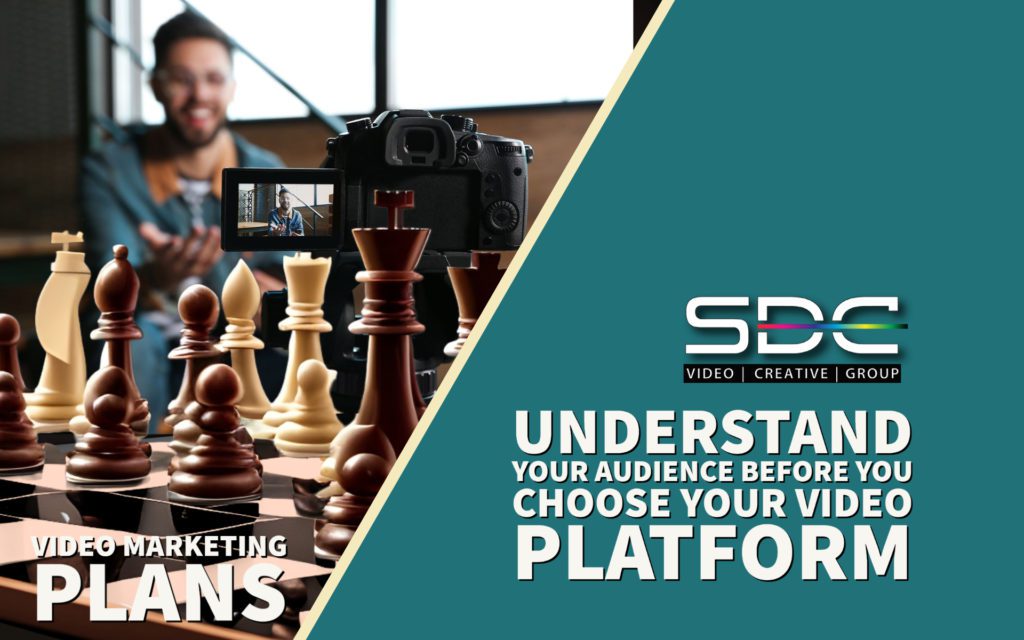Video marketing is a powerful tool to help businesses reach their target audience, drive engagement, and achieve their marketing goals. And it is a solid video marketing plan that will drive you to success.
Whether you’re looking to increase brand awareness, drive website traffic, generate leads, or drive sales, a well-planned video marketing campaign can deliver actual results.
However, knowing where to start with many elements can be challenging.
In this article, we’ll walk you through planning a successful video marketing campaign, from defining your goals to choosing the right platforms and measuring your results.
Whether you’re a seasoned marketer or just starting, this article will provide the information you need to create a successful video marketing campaign.

Table of contents
How to create a video marketing strategy
Creating a video marketing strategy is crucial for any business. Especially if they are looking to harness the power of video to achieve their marketing goals. A well-defined strategy ensures your videos align with your brand, target the right audience, and deliver actual results.
First, start by defining your goals. What do you want to achieve with your video marketing? Increased brand awareness, more website traffic, lead generation, or sales?
Having a clear goal will help you create videos tailored to your target audience and drive actual results.

Advertisement
How these videos differ
Brand Awareness
If your goal is increased brand awareness, your video marketing strategy will be focused on creating high-quality, engaging videos that showcase your brand, tell your story, and reach a wider audience.
Creating brand awareness videos focus more on storytelling and emotion and less on a specific call to action. These videos may be distributed through various channels, including social media, YouTube, and other platforms that reach your target audience.
More Website Traffic
If your goal is more website traffic, your video marketing strategy will be focused on driving traffic to your website through videos shared on social media and other platforms.
In this case, your videos will focus more on specific promotions, products, or services and may include a clear call to action to visit your website.
You will also want to optimize your videos for search engines to increase visibility and reach.
Lead Generation
For lead generation, your video marketing strategy will focus on educating your target audience and converting them into leads. In this case, your videos focus on providing valuable information and demonstrating the benefits of your products or services. Educational videos, tutorials, and demos help potential customers understand your offerings and why they should choose your business. Lead generation videos include calls to action to sign up for a newsletter, download a whitepaper, or contact you.
Sales
If your goal is sales, your video marketing strategy will be focused on demonstrating the benefits of your products and services and driving direct sales. Your videos will be more focused on product demonstrations, customer testimonials, and other types of content that build trust and demonstrate the value of your offerings. Sales videos may include clear calls to action to purchase or schedule a consultation.

Target Audience in a video marketing plan
In developing a video marketing plan, get to know your target audience. For example, who are you creating the videos for?
What are their needs, interests, and pain points? Understanding your audience will help you create videos that resonate with them and provide value.
How to understand your audience
To truly understand your target audience, gathering as much information as possible about who they are and what they need is crucial. One way to do this is by conducting market research through surveys or focus groups. It can give you direct insights into the minds of your audience.
Another way is to analyze customer data such as demographics and purchase history. Again, this can give you a better understanding of who your customers are and what they’re interested in.
Social media and online forums can also be valuable sources of information about your target audience.
Observing conversations on these platforms gives you a sense of what topics are important to them and what they’re talking about.
Engaging directly with your audience through email or social media can provide valuable feedback and help you understand their needs. Additionally, analyzing website analytics like traffic patterns and behavior can give insights into who is visiting your site and what interests them.
By combining these strategies, you’ll be able to build a comprehensive picture of your target audience and create videos that genuinely resonate with them.
Once you clearly understand your target audience, you can choose the platforms where you will distribute your videos. For example, will you use social media, your website, email, YouTube, or other platforms?
Consider where your target audience spends their time and create a distribution plan that effectively reaches them.
Choosing Platforms
When choosing specific platforms for your video marketing, there are a few key factors to consider. First and foremost, you need to understand your target audience and where they spend their time online.
It will help you determine which platforms will reach them and deliver the best results.
For example, if your target audience is primarily on Instagram, that might be the best platform to focus on. On the other hand, if your target audience is more likely to be found on YouTube or LinkedIn, you should focus your efforts there.
Another factor to consider is the type of video you’re creating. Some platforms are better suited for short, snackable content, while others are better for longer, more in-depth videos. For example, TikTok is an excellent platform for quick, entertaining videos, while YouTube is ideal for longer, educational content.
Finally, consider the goals of your video marketing campaign and the type of results you’re hoping to achieve. Different platforms offer different capabilities and opportunities for engagement. Choosing the platforms that align with your goals and will help you achieve the best results is essential.
Choosing the right platforms involves understanding your target audience, the type of content you’re creating, and your goals. By considering these factors, you can make informed decisions and select the platforms that will help you reach your target audience and achieve your desired outcomes.

Budget and a Video Marketing Plan
Determining your video production and promotion budget is crucial in creating a successful video marketing campaign. The amount of money and resources you allocate will depend on various factors, including the goals of your campaign, the type of videos you’re creating, and the platforms you’re using.
When defining your budget, it’s essential to consider both the cost of producing and promoting the videos. For example, if you’re creating high-quality, professionally produced videos, you’ll need to allocate more money for production. On the other hand, if you’re creating simple, low-budget videos, you’ll have more resources to give toward promotion.
Regarding promotion, consider the cost of paid advertising and other promotional activities, such as influencer marketing or email marketing.
One way to define your budget is to determine the ROI (return on investment) required for your campaign. For example, if you want to generate more leads or sales, you’ll want to allocate more budget towards promotion to reach a larger audience.
It’s also important to be flexible and adjust your budget as needed. For example, if you see that a particular platform or promotion is working well, you should allocate more resources in that direction.
In summary, determining your budget for video production and promotion requires considering the goals of your campaign, the type of videos you’re creating, the platforms you’re using, and the cost of production and promotion. By being mindful of your budget and adjusting it as needed, you can ensure that your video marketing campaign successfully delivers the desired results.
Plan your content
Planning your content is crucial in creating a successful video marketing campaign. It involves deciding what type of videos you’ll make, how often you’ll release new videos, and what message you’ll communicate.
Regarding the type of videos you create, think about what your target audience wants to see and what will resonate with them. For example, you might create how-to videos, product demos, or testimonials. Consider creating a mix of different types of videos to see what works best for your audience.
Regarding frequency, consider how often you want to release new videos and what your production schedule allows. For example, you might release one new video per week, or you might release a series of videos over a period of time.
Regarding the message, you’ll communicate, think about what you want your audience to take away from your videos. It could be information about your brand, product, or service or a more emotional message that connects with your audience personally.
A Call to Action
It’s also important to consider the call-to-action you’ll include in your videos. For example, ask viewers to sign up for your email list, visit your website, or make a purchase.
In summary, planning your content involves deciding what type of videos you’ll create, how often you’ll release new videos, and what message you’ll communicate. Considering these factors, you can ensure that your videos are relevant and engaging for your target audience and help you achieve your desired outcomes.
Finally, measure your success by using analytics to track the performance of your videos. Determine what’s working and not, and adjust your strategy accordingly. Then, continuously refine your video marketing strategy to ensure you get the best possible results.
In conclusion, creating a video marketing strategy requires careful planning, understanding your target audience, and making intelligent decisions about budget and content. By following these steps, you can create engaging, compelling videos and drive actual results for your business.
How will your plan differ if your goal is increased brand awareness versus more website traffic versus lead generation or sales?
Summary
To create a video marketing strategy:
Define your goals: increased brand awareness, website traffic, lead generation, or sales.
Know your target audience by conducting market research, analyzing customer data, observing social media conversations, and engaging with your audience.
Choose the platforms for distribution based on your target audience’s presence, the type of video you’re creating, and your goals.
Determine your budget for video production and promotion.
Remember, having a well-defined video marketing strategy is crucial in ensuring that your videos align with your brand, target the right audience, and deliver actual results.





